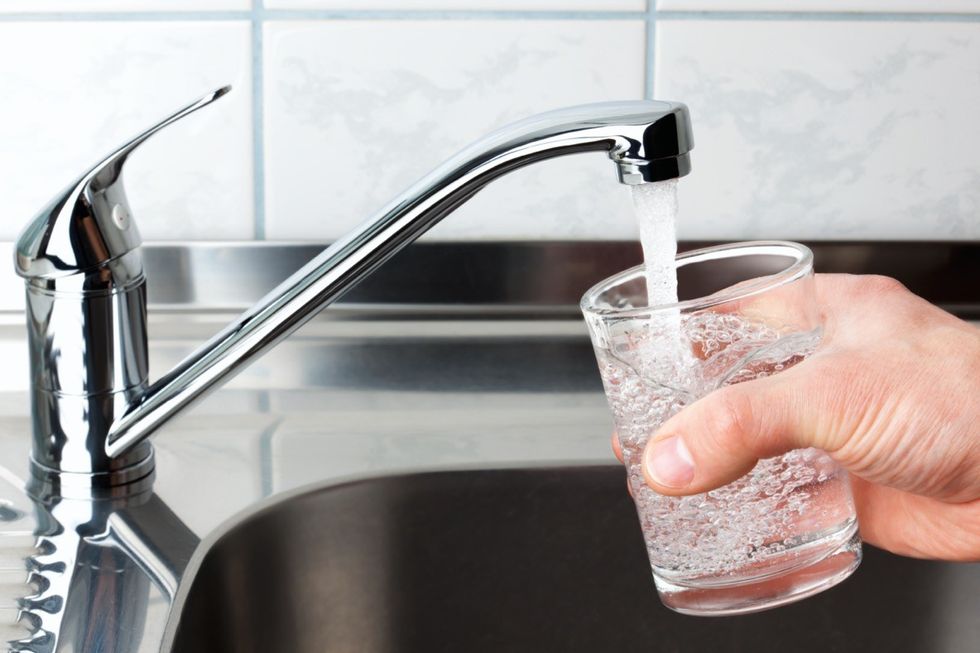Safe drinking water is a privilege—one that more than 30 million Americans don’t have access to, according to a report commissioned by the Pulitzer Center in Time magazine. A new study published in the journal Risk Analysis has identified the top four states with the most tap water violations. Furthermore, the authors explored different strategies that could reduce these metrics, making drinking water safer and more accessible for Americans of all economic backgrounds.
RELATED: 10 States With the Cleanest Tap Water, New Data Shows.
One solution is to privatize water systems across the country, which the U.S. government is in favor of.
This would reduce the “substantial costs” associated with maintaining public water systems. “Supporters of water system privatization argue that private firms operate more efficiently than the government, resulting in faster resource access,” per the study. Additionally, doing so would allow government leaders to allocate funds “to other areas that enhance citizens’ well-being.”
However, the opposing side says water privatization could “exacerbate water scarcity.” Without government interference, there’s no arbiter to stop private sectors from prioritizing profits over public needs, which could run up the cost of access to high-quality drinking water. This could have direct consequences for low-income and marginalized communities, who are already at high risk.
“Our results suggest that privatization alone is not a solution,” said lead author Alex Segrè Cohen, a University of Oregon science and risk communication assistant professor, in the press release. “The local context, such as regulatory enforcement, community vulnerability, and community priorities, matters in determining outcomes.”
To arrive at their findings, Segrè Cohen and his team pulled data on drinking water systems from the U.S. Environmental Protection Agency’s (EPA) Safe Drinking Water Information System (SDWIS), which represents 90 percent of U.S. drinking water. These included intelligence details (name, location, ownership, number of facilities in the system) and system violation statistics. A violation is given when a system goes against the Safe Drinking Water Act (SDWA).
Private water systems were defined as “water distribution systems for the public that are privately owned.” Public water systems were categorized as “water distribution systems for the public that are owned by non-private entities,” including those operated by the government and/or Native American tribes.
RELATED: New Study Uncovers the “Potential Risks” of Bottled Water and Why You Should Drink Tap Instead.
According to their findings, the four states with the most county tap water violations are Pennsylvania, North Carolina, Oklahoma, and West Virginia, the last of which had the highest tally of water drinking violations reported by a single system. This facility happened to be operated by the local government.
Moreover, Mississippi, South Dakota, and Texas were found to have the highest ranking of water injustice, which the researchers define as “the unequal access to safe and clean drinking water that disproportionately impacts low-income households and people of color”
As briefed in the press release, “Living in a county with both high water injustice and a higher proportion of privatized water systems was associated with a greater concern or perception of vulnerability around water access and security—with concerns about water accessibility, safety, and reliability.”
“We found that violations and risks of water injustice tend to cluster in specific areas or hotspots across the country,” Segrè Cohen concluded.
“Policymakers can use our findings to identify and prioritize enforcement efforts in hotspots, make improvements in infrastructure, and implement policies that ensure affordable and safe drinking water—particularly for socially vulnerable communities.”
Content shared from bestlifeonline.com.

